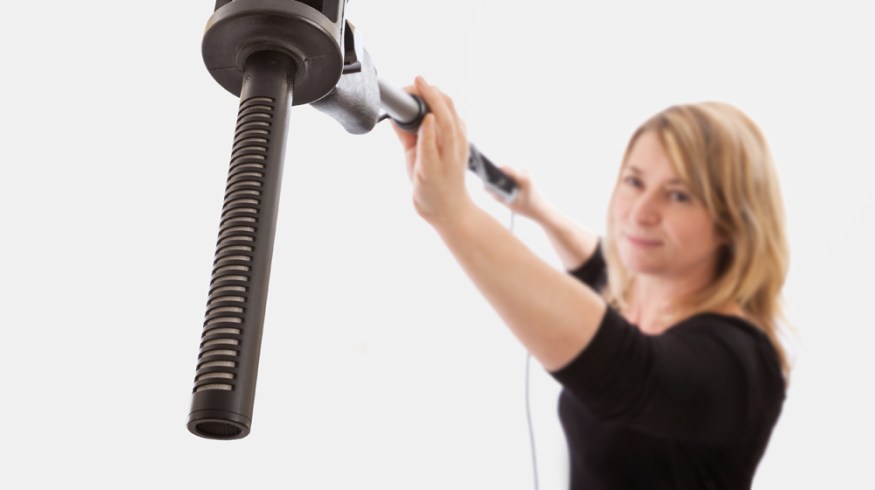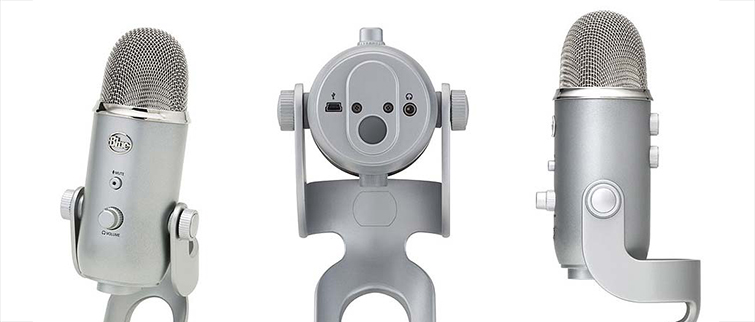
6 Microphone Pickup Patterns Every Filmmaker Should Know
Don’t pick the wrong mic! Find out when to use certain microphones by learning these six essential microphone pickup patterns.
A film is only as good as its audio. While it can be easy to get captivated by the visual side of a film, audio should be high on the priority list of any director or producer. Bad audio can quickly turn off an already distracted audience, so it’s important to pick the right mic for the job. Let’s take a look at six essential microphone pickup patterns that every filmmaker should know.
There is no one-size-fits-all solution when recording audio on a film set. You will likely want to bring a good assortment of lavs and shotgun mics to accommodate different shooting scenarios on set.
1. Omnidirectional
Perfect for: interviews, moving subjects

Omnidirectional mics are the easiest to understand. Simply put, omnidirectional mics record audio from every direction. Typically you will want to use an omnidirectional mic when recording audio that you can’t control very well (like ambience, a press conference, or a moving talking head). Omnidirectional mics are the most flexible mics, but they are also the noisiest. It’s certainly a balancing act when on set. In a filmmaking context, you will almost exclusively see omnidirectional pickup patterns in lav mics.

Notable omnidirectional mics:
- Polsen OLM-10- $22
- Rode smartLav+ – $79
- Sennheiser MKE-2-PC – $399
- Sennheiser EW 112-P G3 Wireless System – $629
2. Cardioid
Perfect for: documentary recording, weddings, events

A cardioid pickup pattern is a highly flexible pickup pattern that is great for all-purpose use. Cardioid microphones come in all shapes and sizes. A cardioid mic, while slightly directional, should not be confused with a hypercardioid or supercardioid mic. Cardioid mics will still pickup background noise if they are not in a controlled environment.

Notable cardioid mics:
3. Hypercardioid (Mini-Shotguns)
Perfect for: on-camera mics, documentary recording, and instrument recording

A hypercardioid pickup pattern is a directional pickup pattern that is great for isolating audio. While you may find some lav mics with hypercardioid pickup patterns, you’ll typically only see this pickup pattern in shotgun mics. While every brand is different, the biggest difference between a hypercardioid mic and a supercardioid mic is how much of the rear and side noise is picked up. Hypercardioid mics are typically used for instrument recording.

Notable hypercardioid mics:
4. Supercardioid (Shotgun)
Perfect for: reality television, scripted content

Supercardioid mics are the most popular types of microphones for indie filmmakers because they give users the ability to isolate audio while still allowing for a slight margin of error. Supercardioid pickup patterns are typically only found in shotgun mics which are used on boom poles or mounted to the top of a camera. It should be noted that a supercardioid pickup pattern does pickup some audio from behind the microphone. So if you mount a supercardioid mic to your camera, you’ll need to keep your operating noise to a minimum.

Notable supercardioid/shotgun mics:
5. Lobar (Unidirectional)
Perfect for: narrative film, controlled sets

While there is technically no such thing as a true unidirectional mic, a lobar pattern is the most directional pickup pattern you can use. While it may be appealing to a filmmaker to get a microphone with a lobar pickup pattern, you should seriously consider how difficult it will be to use a lobar microphone.
The only microphone that can have a lobar pickup pattern is a shotgun mic, so you’ll almost always need someone to assist you when operating a microphone with a lobar pickup pattern. If your boom pole is typically operated by a careless PA, you might want to opt for a supercardioid mic instead, as the pickup pattern will be more forgiving.

Notable lobar mics:
6. Bidirectional (Figure 8 Pattern)
Perfect for: podcasts, radio interviews

A bidirectional microphone is a mic designed to pickup audio equally from the front and back of the mic. Typically, bidirectional microphones are used for radio interview recording or podcasting. You will probably not find much use for a bidirectional microphone on a film set, but they can sometimes be used as a backup mic for talk shows when placed on the hosts desk.

Notable bidirectional mics:
Overview of Mic Pickup Patterns
If you want to learn more about microphone pickup patterns (and hear audio examples of each mic in action), check out this awesome video created by Videomaker. The video touches on all of the microphones included in this post.
What’s your favorite microphone to use? Let us know in the comments below.





